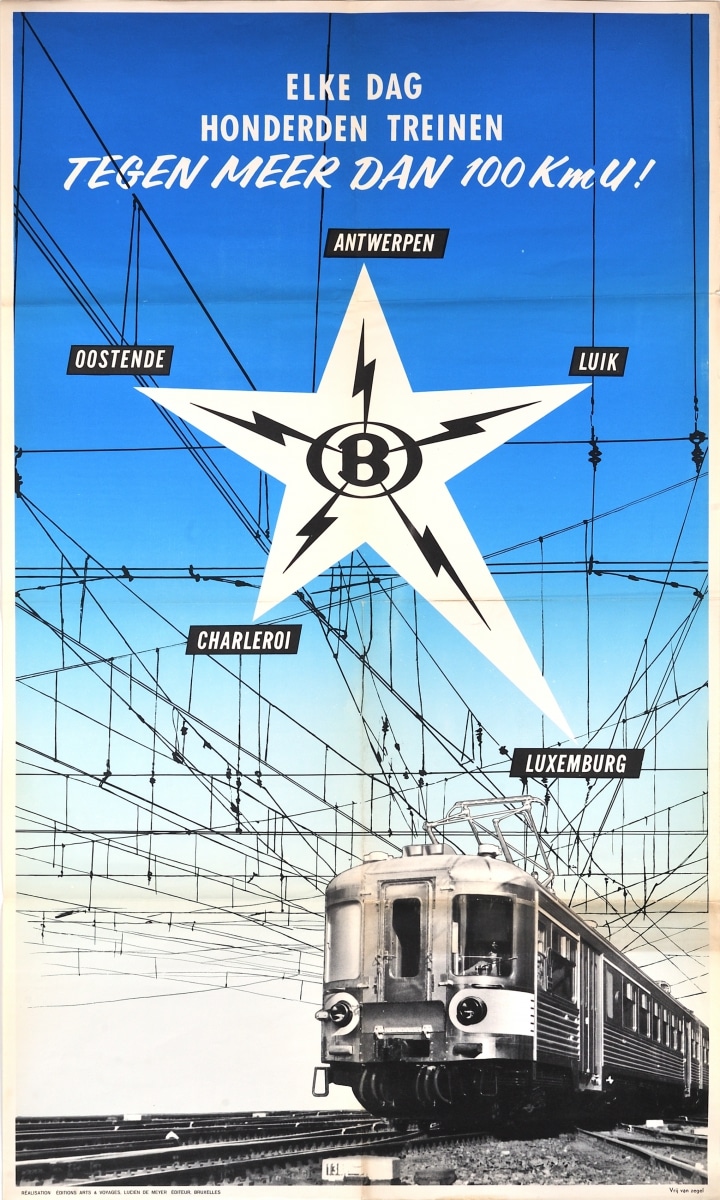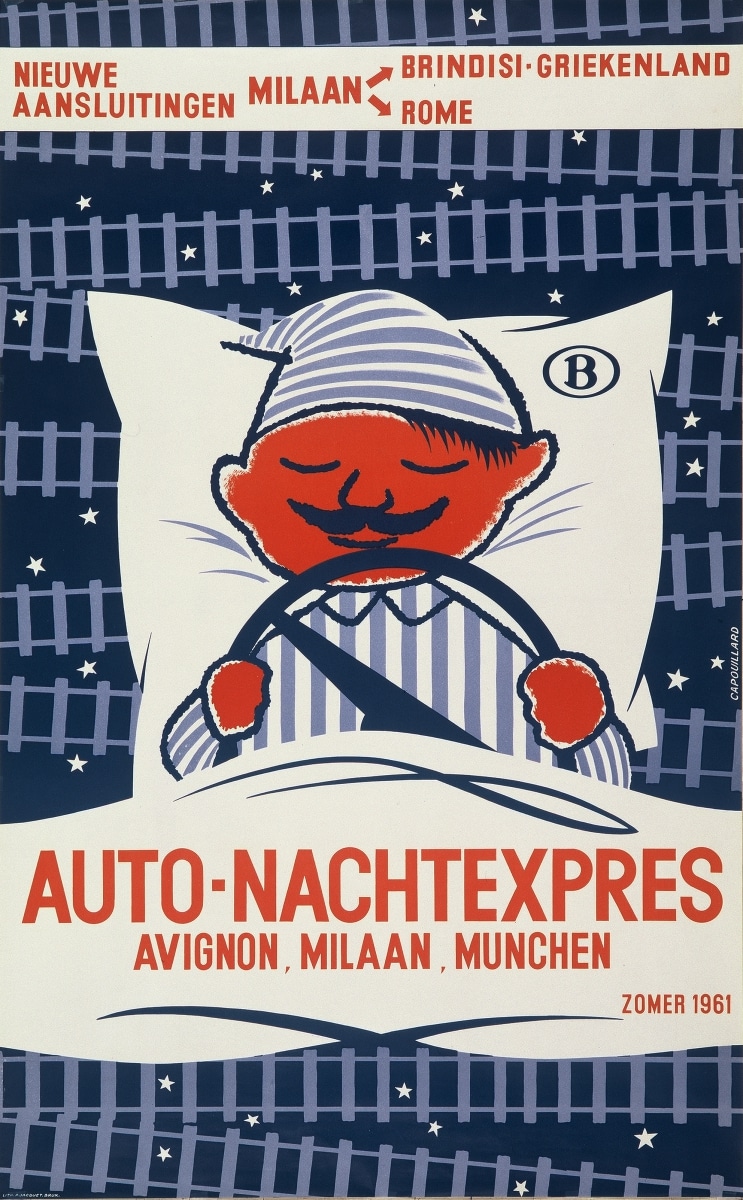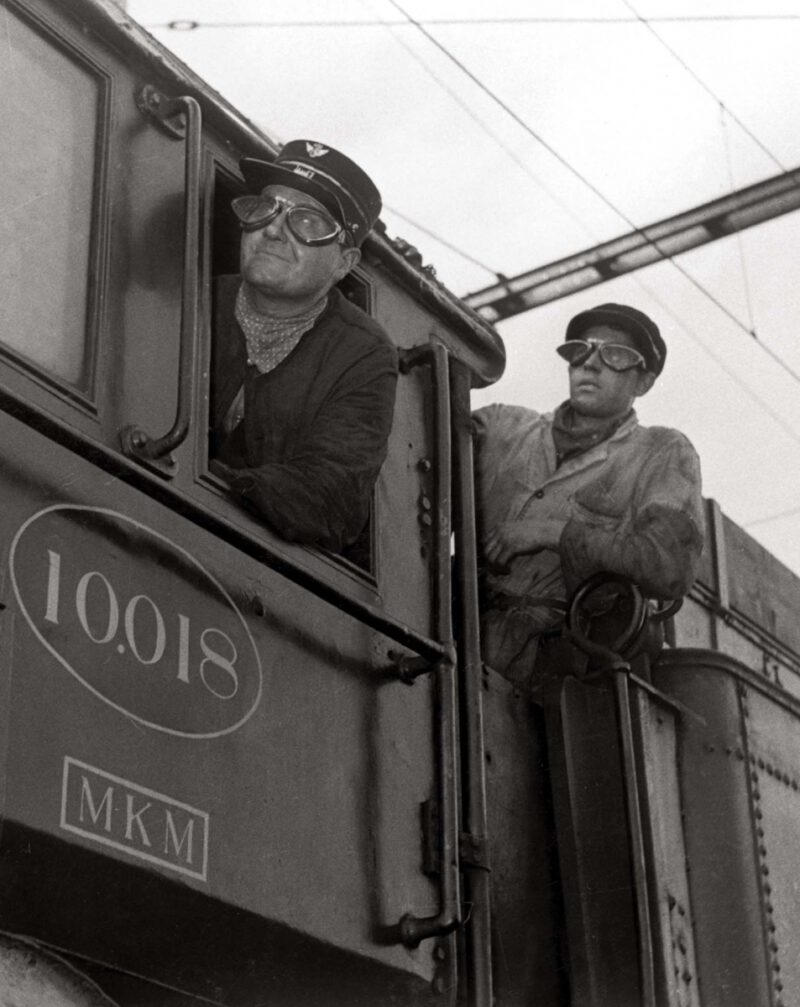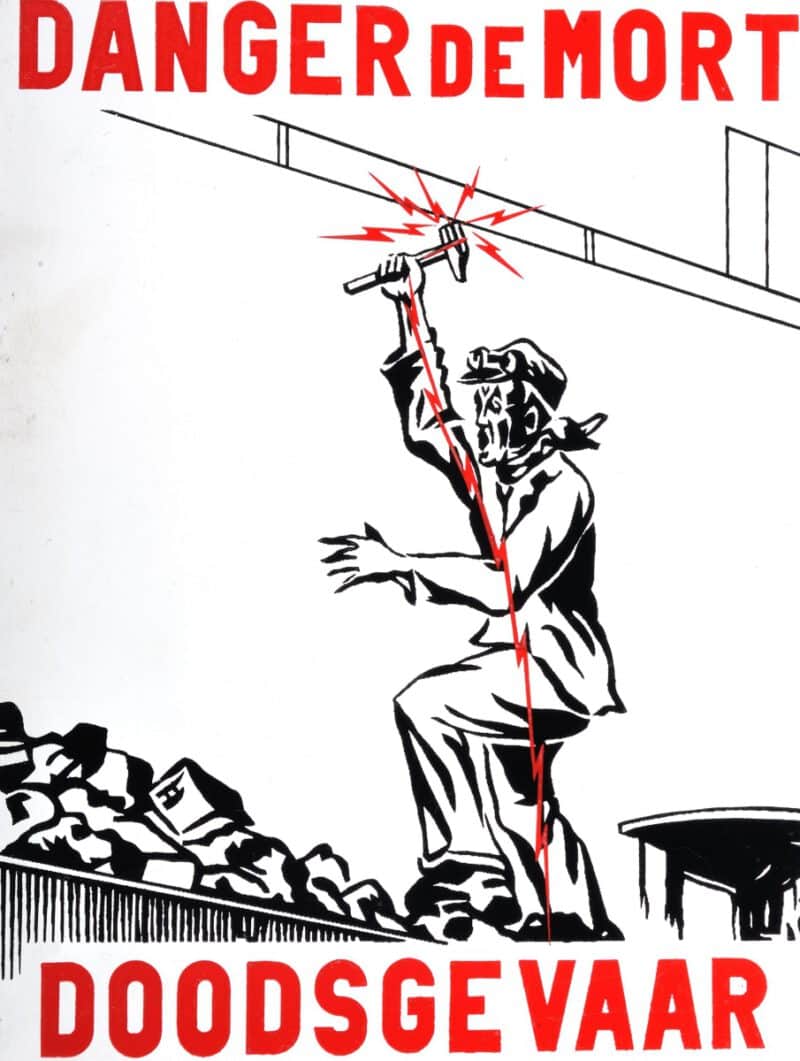In the fifties, the car quickly became the ultimate status symbol. Unlike the pre-Second World War period, cars were no longer a monopoly for those with lots of money. The hard-working common man could also afford one. A car still cost a labourer a year’s salary, but you could save up for one or borrow the funds.
In 1950, there were already 273,599 cars driving around in Belgium. By 1960, this had increased to 753,136. NMBS/SNCB responded to this trend in 1956 with the launch of the motorail train.
The growth in motorised traffic demanded more and more space. Gone were the days of city life when children played, and people strolled and shopped. The car now ruled the roads. Cobblestones made way for concrete and asphalt, buildings were demolished, pavements narrowed, tram tracks dismantled, parks disappeared… The car was king and nothing could stand in its way. There was no question of careful planning. Signs of the first traffic problems appeared in 1958.
The railway saw a gradual decline in its market share. The exception was 1958, the year of the Expo. In this particular year, NMBS/SNCB transported 263.5 million passengers, 4.9% more than in 1957. The company had adapted its service for the Expo, particularly on Saturdays and Sundays. Those living in districts far from Brussels also got the chance to spend an entire day in the capital.
However, things were not looking good for the railways. The accounts were in the red. In September 1958, the government approved a four-year plan. Investments were made in things such as electrification and the replacement of wooden carriages, but the investments required for the outdated rail infrastructure, rolling stock and stations was far greater. The traffic minister himself was forced to admit in September 1959 that thousands of wooden carriages would still be employed during rush hour…









